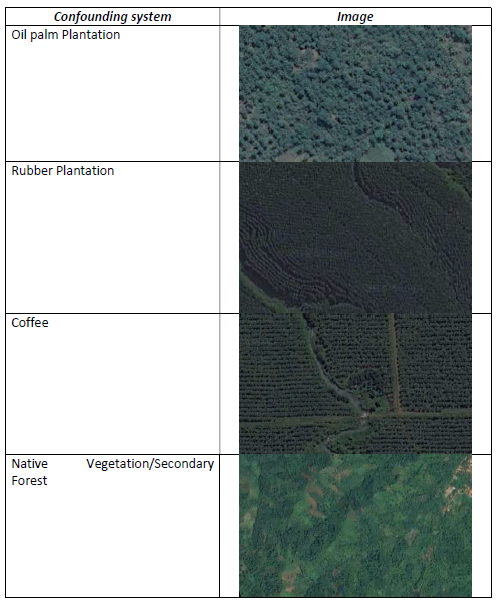Time has flown and I’m into my final two weeks at the CIAT office. At the start of the week I had a discussion with the Terra-I team about the challenges and timeline for the national level cocoa classification, given my limited timeframe remaining. I’m hoping to get some cocoa probability maps from them this week.
From the trial runs carried out for the Lampung province, it has been found that the automatic classification system is working quite well at the lower probability end of the cocoa classification. However, at the other end of the scale (positive identification of cocoa), rubber and coffee plantations seem to be the most problematic confounding systems in this region. Coffee and rubber was identified as one of the four most likely confounding systems prior to starting the system training exercise. See figure below of the image interpretation key of the four confounding systems used in the supervised classification.

On the positive side, it appears that the system is not misclassifying low shade oil palm and native forest. Some coffee location data was obtained which helped with this, however it is possible that some higher shade coffee systems are still being misclassified. There is also a risk of confounding systems looking different in other provinces due to different management practices, meaning there is not a consistent visual description for the system to use for classifications.
The risk of these misclassifications is that it will lead to an overestimation of biomass and carbon stock stored on cocoa farms. The classifications could be improved if cocoa polygons could be obtained which contain just cocoa and excluded non-cocoa land-cover such as roads and neighbouring houses. Although this won’t be possible within the timeframe of my project, it can be part of the longer term refinement of the system.
